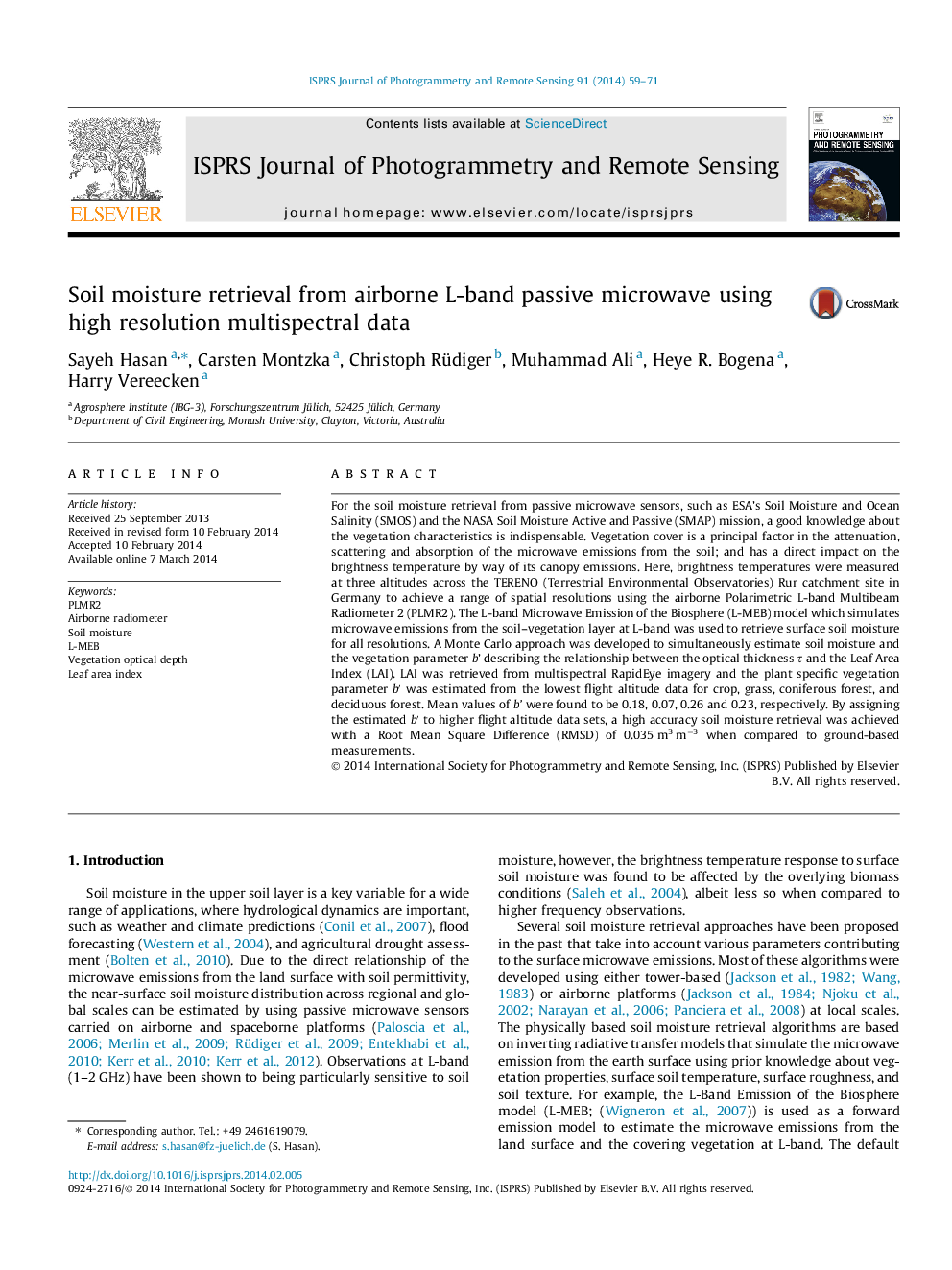| Article ID | Journal | Published Year | Pages | File Type |
|---|---|---|---|---|
| 557191 | ISPRS Journal of Photogrammetry and Remote Sensing | 2014 | 13 Pages |
For the soil moisture retrieval from passive microwave sensors, such as ESA’s Soil Moisture and Ocean Salinity (SMOS) and the NASA Soil Moisture Active and Passive (SMAP) mission, a good knowledge about the vegetation characteristics is indispensable. Vegetation cover is a principal factor in the attenuation, scattering and absorption of the microwave emissions from the soil; and has a direct impact on the brightness temperature by way of its canopy emissions. Here, brightness temperatures were measured at three altitudes across the TERENO (Terrestrial Environmental Observatories) Rur catchment site in Germany to achieve a range of spatial resolutions using the airborne Polarimetric L-band Multibeam Radiometer 2 (PLMR2). The L-band Microwave Emission of the Biosphere (L-MEB) model which simulates microwave emissions from the soil–vegetation layer at L-band was used to retrieve surface soil moisture for all resolutions. A Monte Carlo approach was developed to simultaneously estimate soil moisture and the vegetation parameter b’ describing the relationship between the optical thickness τ and the Leaf Area Index (LAI). LAI was retrieved from multispectral RapidEye imagery and the plant specific vegetation parameter b′ was estimated from the lowest flight altitude data for crop, grass, coniferous forest, and deciduous forest. Mean values of b’ were found to be 0.18, 0.07, 0.26 and 0.23, respectively. By assigning the estimated b′ to higher flight altitude data sets, a high accuracy soil moisture retrieval was achieved with a Root Mean Square Difference (RMSD) of 0.035 m3 m−3 when compared to ground-based measurements.
